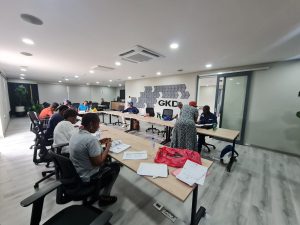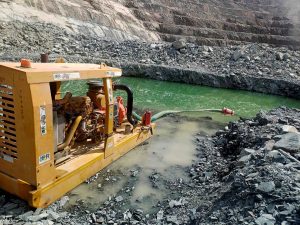As the South African government mulls over ways to improve the performance of Eskom’s coal-fired power stations, collaborating with power plant original equipment manufacturers (OEMs) may be the answer to optimising power generation and ultimately put an end to load shedding. Thava Govender, CEO of Babcock’s engineering business, says long-term partnerships with power plant OEMs may be the much-needed solution to addressing the electricity crisis and stabilising the grid.
That the lack of reliable electricity supply is one of the biggest economic constraints in South Africa is no overstatement. To provide context, record levels of load shedding were experienced in 2022, with 207 days of blackouts recorded during the year, compared with 75 days in 2021. This has had a devastating impact on businesses and the economy at large.
As part of government’s efforts to solve the electricity crisis and end load shedding, National Treasury proposed a total debt-relief arrangement for Eskom of R254-billion during the 2023 Budget Speech. However, the arrangement came with strict conditions to safeguard public funds. One of the conditions was that Eskom would implement the recommendations of an independent assessment of its operations, which was commissioned by National Treasury.
In February 2023, National Treasury announced that it had appointed the German VGBE Energy Consortium to assess and investigate the operations of Eskom’s coal fleet. The outcome of the assessment, which was concluded in July this year, will consider a concession model which could see OEMs playing a central role in turning around and improving the energy availability factor (EAF) and performance of Eskom coal-fired power plants.
Why OEMs?
According to Govender, it is important to note that the root cause of the current electricity crisis in the country is the lack of sustainable maintenance, not insufficient energy capacity, as is mostly purported. While South Africa’s coal fleet has a 51% EAF, many plants globally of the same age are operating at a much higher EAF of over 85%. Currently, says Govender, 80% of unavailable power is due to inadequate attention, with only 20% of the power stations on planned maintenance.
Over the years, lack of proactive engagement with OEMs has hampered determination, definition and optimisation of a detailed maintenance scope. The devaluing of OEM support has therefore impacted their ability to effectively support Eskom. One of the reasons for disregarding OEM engineering services is the perception that OEMs are expensive.
The truth of the matter, stresses Govender, is that OEMs are not expensive – they offer a premium service which, of course, calls for a significant initial capital investment, which is in fact outweighed by the substantial return on investment through a much higher EAF over the lifecycle of the power plants. The comprehensive lifecycle support capabilities are made possible by the OEMs’ strong skills base, which is a big overhead cost they have to carry and have invested in over the years.
To remedy the current power crisis, Govender believes that power plant OEMs have an important role to play. By their nature, OEMs offer end-to-end services – designing, supplying, operating, manufacturing, constructing, commissioning, maintaining and guaranteeing the long-term performance of the critical boilers, turbines and generators, amongst other critical components of the power plants that they supply.
One of the sustainable ways of reviving Eskom’s coal fleet is through the refurbishment of the power stations – restoring the plants to their near original state. According to Govender, most of the power stations were built decades ago, and were designed for a certain coal quality available at the time.
With coal quality deteriorating over the years, OEMs – leveraging their access to new technologies, local expertise and global best practices – have the ability to upgrade the necessary components such as boilers and turbines to allow the old power stations to operate at peak performance using the new grade of coal available. However, stresses Govender, these changes require time to assess and correct, especially given that there have been some undocumented modifications to the power stations over the years.
“OEMs bring a lot to the table in the quest to finding a lasting solution to the incessant load shedding,” says Govender. “They possess a comprehensive understanding, drawings and design performance parameters of the power stations. With their access to developing technologies, they will definitely improve the performance of the coal fleet.”
The other key benefit of engaging OEMs is that they offer the necessary spare parts needed to keep these power stations running at peak performance. “At Babcock, for example, we manufacture a fair majority of the parts for our boilers locally. OEM parts guarantee an exact replacement of what was originally included on the boilers, for example. This, in my view, is incredibly important and worth any cost that comes with it.”
Babcock’s value proposition
As one of the leading boiler manufacturers, Babcock has a long track record spanning some 130 years in South Africa, with an extensive installed base of over 1 500 boilers during that period. In fact, the company has been involved in the construction and maintenance of some of the flagship coal-fired power stations in the country.
One that quickly comes to mind is Lethabo Power Station, one of the top-performing power stations to date. The company has also been involved in the construction of the first six units for Matla Power Station, five units for Hendrina Power Station and five units at Grootvlei Power Station.
Babcock also leverages OEM services to maintain and upgrade power stations that were originally built by other OEMs. Its engineering expertise enables it to effectively execute modifications and improvements. Some notable achievements include Kendal Power Station, where the company successfully executed a long-term maintenance contract since commissioning, until 8 December 2021. At Matimba Power Station, the company successfully replaced a main steam system to enhance reliability.
Apart from building and maintaining power stations, the company has also expanded its scope with emissions abatement services. Having already successfully completed a NOx abatement project at a petrochemical plant in the country, where emission levels were reduced by almost 40% lower than the legal requirement, Babcock has successfully been awarded a contract to refurbish electrostatic precipitators at one of Eskom’s power stations.
“Another area of competence is mainstream pipework. We have already demonstrated our competence in this area at two Eskom power stations. In fact, we are the only company that has successfully executed a main system replacement from boiler to turbine,” says Govender.
Through its supplier development programmes, Babcock can directly empower local small and medium enterprises, micro-enterprises and qualifying small enterprises in the power value chain. “Through our Education and Training division, we have also demonstrated our commitment to developing skills, including those of artisans, mechanics and welders, for our own needs and also for the broader economy,” says Govender.
Babcock also leverages partnerships with leading international technology providers to ensure access and support from the best in the industry. “A lot of know-how resides within our organisation, but we can also tap into the strategic alliances we have with global technology partners such as the Babcock & Wilcox partnership in the United States. This partnership gives us access to the latest advancements which can be retrofitted on local power stations to optimise performance,” concludes Govender.







